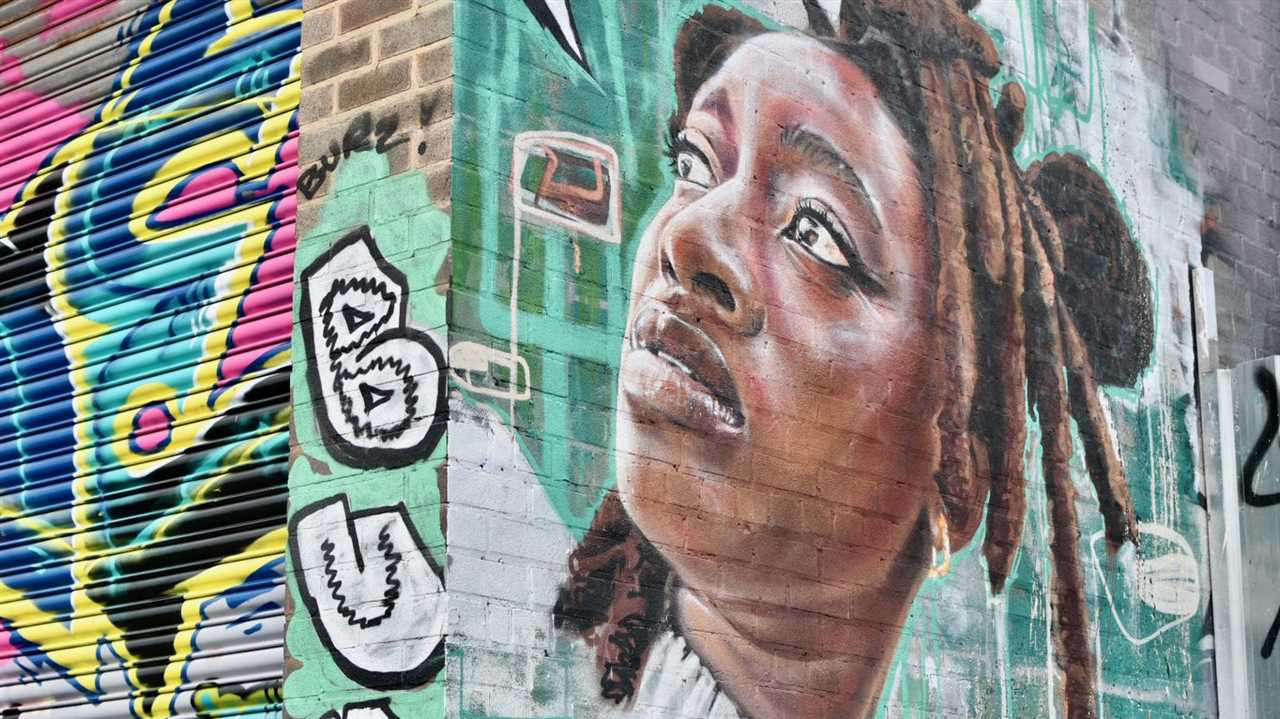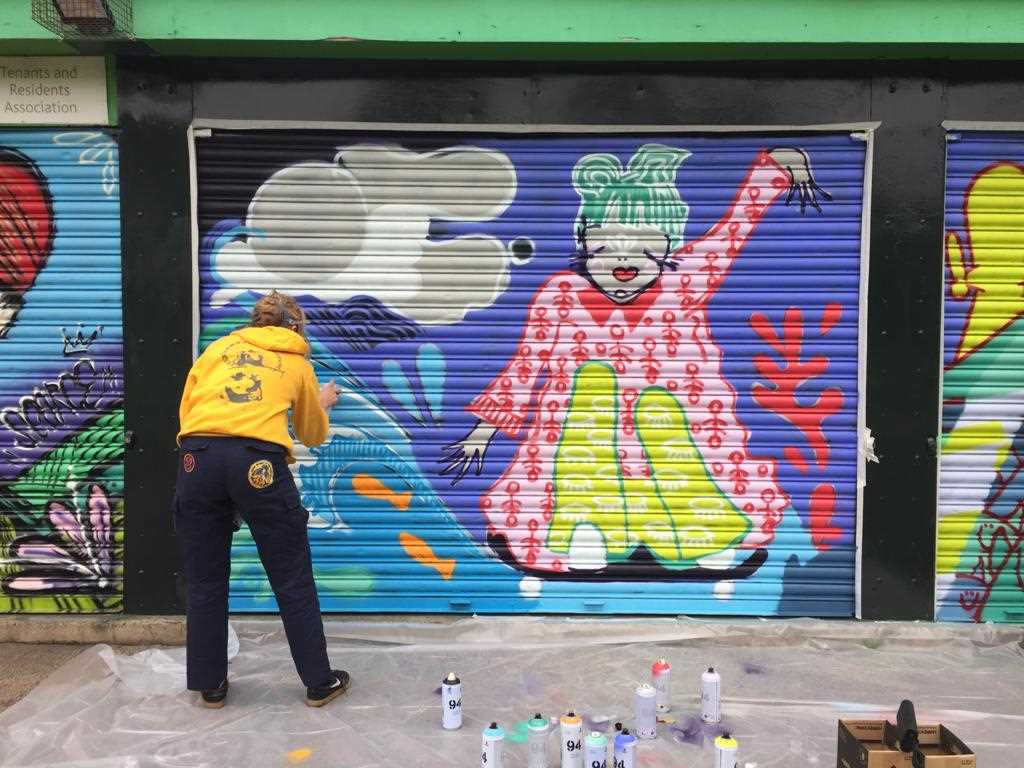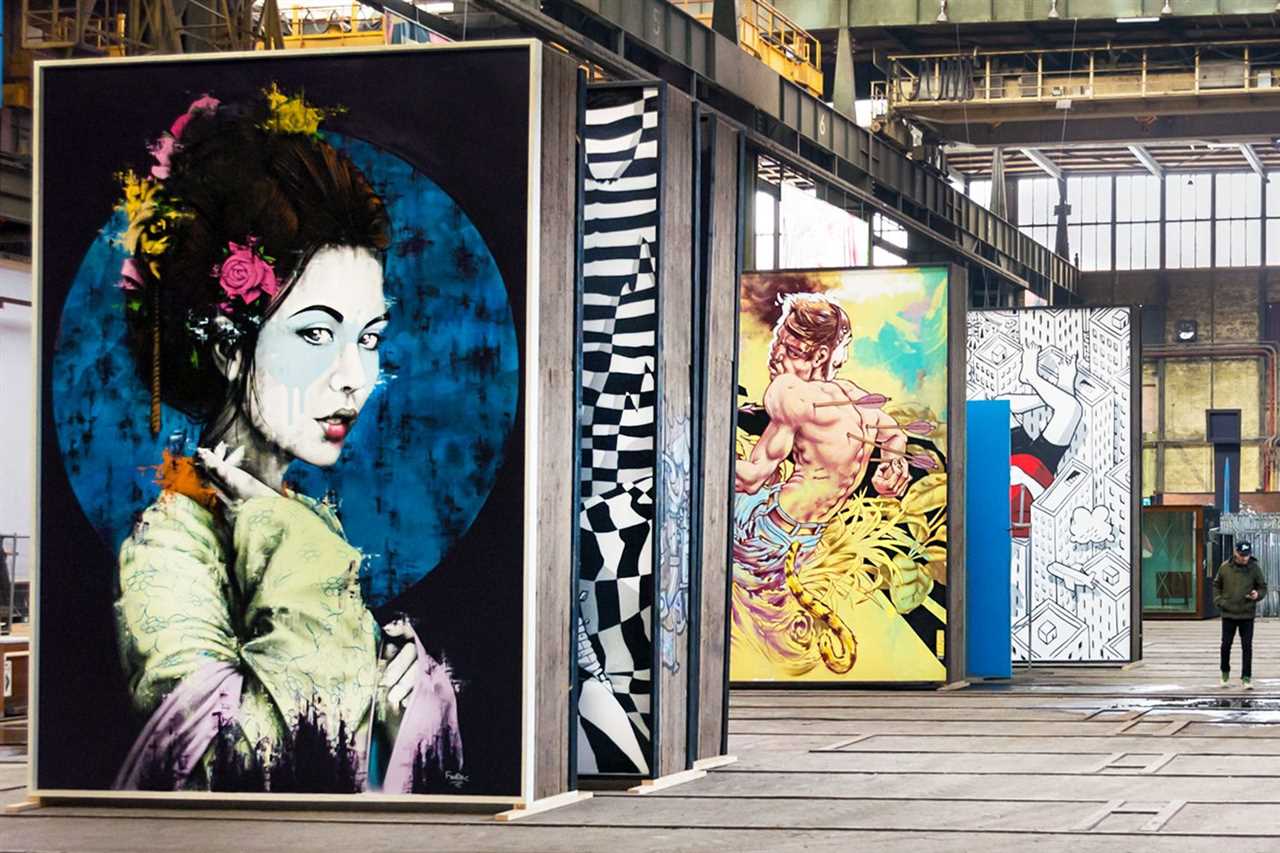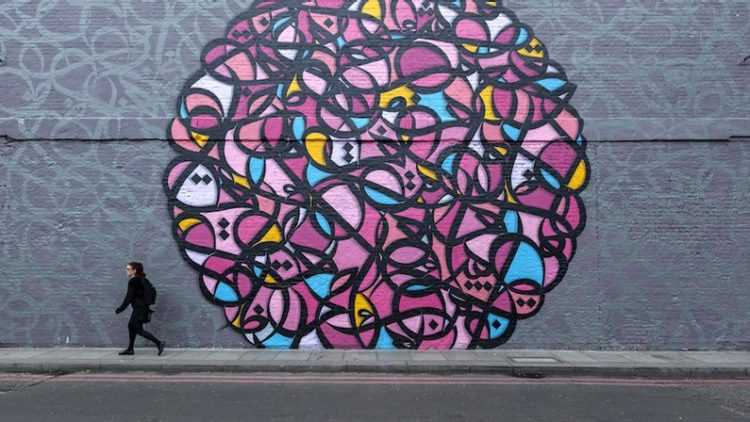
Street art has become an integral part of urban culture in the United Kingdom, transforming drab walls into vibrant canvases that tell stories, challenge norms, and provoke thought. From the bustling streets of London to the artistic hubs of Bristol and Manchester, graffiti and urban paintings have taken on a life of their own, capturing the imagination of both locals and tourists alike.
What sets street art apart from traditional forms of art is its rebellious spirit and its ability to reach a wider audience. Artists take to the streets, armed with spray cans and stencils, to create powerful and thought-provoking works that can be enjoyed by anyone who happens to pass by. This accessibility makes street art truly democratic, breaking down barriers and bringing art to the masses.
The UK has long been a hotbed for street art, with both established artists and emerging talents leaving their mark on the country’s walls. Banksy, perhaps the most famous street artist of our time, hails from Bristol and has gained international recognition for his politically-charged and thought-provoking works. Visitors from around the world flock to the UK to catch a glimpse of his elusive creations.
But Banksy is just one of many talented artists who have made their mark on the UK’s urban landscape. From the intricate murals of London’s East End to the colorful portraits adorning Manchester’s Northern Quarter, street art has the power to transform neglected spaces into vibrant artistic hubs. It adds a sense of vibrancy and energy to the streets, turning a simple walk into an immersive cultural experience.
The Rise of Street Art
Street art has emerged as a powerful form of artistic expression in the United Kingdom over the last few decades. What was once considered vandalism is now celebrated as an important part of the cultural landscape.
The roots of street art can be traced back to the graffiti movement in the 1970s, when artists in New York City began using spray paint to make their mark on urban walls and buildings. This form of self-expression quickly spread to the UK, where it found a receptive audience among young artists.
One of the main factors contributing to the rise of street art in the UK was the punk movement of the late 1970s. Punk music and fashion rebelled against the established norms, and street art became a natural extension of this defiance. Graffiti artists used the streets as their canvas, creating vibrant and provocative pieces that challenged authority and questioned societal values.
Another key factor was the emergence of stencil art as a popular technique. Artists such as Banksy, who remains one of the most well-known street artists today, popularized the use of stencils to create detailed and intricate images. This technique allowed artists to quickly create large-scale works, making it easier to create art in public spaces without being caught.
The Influence of Street Art
Street art has had a profound impact on the art world, challenging traditional notions of what art can be and where it can be displayed. It has become a platform for artists to address social and political issues, with many pieces reflecting themes of inequality, consumerism, and environmentalism.
Furthermore, street art has the power to transform neglected and rundown areas, bringing vibrancy and creativity to urban spaces. It can challenge our perceptions of public space and encourage us to reevaluate our surroundings.
The Future of Street Art
As street art continues to gain recognition and acceptance, it is likely to become even more integrated into mainstream culture. Museums and galleries around the world are now showcasing street art exhibitions, and some street artists have even achieved commercial success.
Exploring Different Forms of Street Art

Street art encompasses a wide range of creative expressions that can be found in urban spaces across the UK. From traditional graffiti to large-scale murals, each form of street art offers a unique perspective and style.
One of the most common forms of street art is graffiti. Graffiti is typically characterized by its bold, colorful letters and intricate designs. It often serves as a form of self-expression for artists and can be found on walls, buildings, and other surfaces throughout cities. While graffiti has historically been associated with vandalism, it has also gained recognition as a legitimate art form.
Another popular form of street art is stencil art. Stencil art involves creating an image by cutting out a design on a stencil and then spraying or painting the design onto a surface. This technique allows artists to replicate their designs quickly and efficiently. Stencil art can range from simple silhouettes to elaborate and detailed images.
Murals are another prominent form of street art. Murals are large-scale paintings that often cover entire buildings or walls. They can depict a wide range of subjects, from political statements to abstract designs. Murals can be found in many cities and can transform the appearance of urban spaces.
In addition to traditional forms of street art, artists in the UK have also embraced other mediums such as wheatpasting and sticker art. Wheatpasting involves using a mixture of wheat paste and water to adhere posters or images to surfaces, creating a temporary or semi-permanent display. Sticker art, on the other hand, involves creating stickers with unique designs and placing them in public spaces. Both wheatpasting and sticker art allow artists to quickly and discreetly share their artwork with a wider audience.
Overall, street art in the UK is a diverse and dynamic art form that continues to evolve and push boundaries. Whether it’s graffiti, stencil art, murals, or other innovative techniques, street art adds vibrancy and creativity to urban landscapes and serves as a form of artistic expression for artists and spectators alike.
The Artists Behind the Walls

Street art in the UK has been taken to new heights by the incredible talent of the artists behind the walls. These artists use spray paints, stencils, and other techniques to create stunning works of art that adorn the streets of cities and towns across the country.
Many street artists in the UK remain anonymous, preferring to let their art speak for itself. These elusive figures leave their mark on walls, buildings, and public spaces, adding a sense of vibrancy and creativity to the urban landscape.
Pioneers of Street Art

Some of the earliest street artists in the UK paved the way for the current scene. Artists like Banksy and Blek le Rat introduced stenciling techniques, allowing for intricate and detailed imagery to be quickly reproduced on the streets. Their work often carries political and social messages, serving as a form of protest and commentary on modern society.
These pioneers inspired a new generation of artists, who continue to push the boundaries of what is possible with street art. From large-scale murals to tiny hidden gems, the artists behind the walls bring a sense of wonder and awe to the streets.
Exploring Themes and Styles

Street art in the UK is incredibly diverse, with artists exploring a wide range of themes and styles. Some artists focus on creating realistic portraits, while others prefer abstract and surreal designs. Themes of nature, politics, and pop culture are often explored, reflecting the rich tapestry of ideas and influences present in contemporary society.
Street art is not limited to just paint and spray cans. Many artists also incorporate other art forms into their work, such as sculpture, installations, and interactive elements. This multidisciplinary approach creates a dynamic and immersive experience for viewers.
The artists behind the walls continue to evolve and innovate, constantly pushing the boundaries of what street art can be. Their creativity and talent have transformed the urban landscape, turning the streets into a vibrant gallery that is accessible to all.
Next time you walk down the streets of a UK city, take a moment to appreciate the art that surrounds you. Behind every stunning mural and hidden piece of graffiti is an artist with a story to tell.
Don’t just walk past. Stop, look, and let the art speak to you.
The Influence of Street Art on Urban Culture

Street art has had a profound influence on urban culture, transforming cityscapes into vibrant and dynamic spaces. It has become a powerful form of expression for artists and a way to communicate with the public, addressing social, political, and environmental issues.
One of the main impacts of street art is its ability to challenge traditional notions of art and bring it into public spaces. Walls, buildings, bridges, and other urban structures become the canvas for artists to showcase their creativity, turning otherwise mundane and uninspiring spaces into works of art. This transformation creates a sense of surprise and wonderment for residents and visitors alike, adding a new dimension to the urban environment.
Empowering Local Communities

Street art has become a way for local communities to reclaim their public spaces. By transforming dilapidated buildings and neglected areas into colorful and vibrant murals, street art revitalizes neighborhoods and fosters a sense of pride and ownership. It gives a voice to the community, enabling them to express their identity and highlight the unique aspects of their locality.
Furthermore, street art often reflects the cultural traditions, history, and stories of the local community. It becomes a form of storytelling, helping to preserve and celebrate the heritage of a place. This cultural significance not only enhances the aesthetic appeal of the urban landscape but also contributes to the overall well-being of the community.
Inspiring Creativity and Social Change

Street art serves as an inspiration for budding artists, encouraging creativity and self-expression. It often represents a form of art that is accessible to all, breaking down barriers to traditional art forms and democratizing artistic expression. By seeing the works of street artists, aspiring artists are empowered to pursue their own creative endeavors, bringing forth new ideas and perspectives.
Moreover, street art can act as a powerful medium for social change and activism. Artists use their art to raise awareness about social issues, such as inequality, discrimination, and environmental degradation. By addressing these topics in a public space, street art becomes a catalyst for conversations and dialogue, encouraging the community to reflect on these issues and take action.

I am a mural enthusiast and a fervent admirer of street art. Rather than creating murals myself, I am passionate about collecting them. My love for street art knows no bounds. I am dedicated to curating and cherishing these artworks that grace the streets. My collection stands as a testament to my profound appreciation for this form of artistic expression.
read about me



